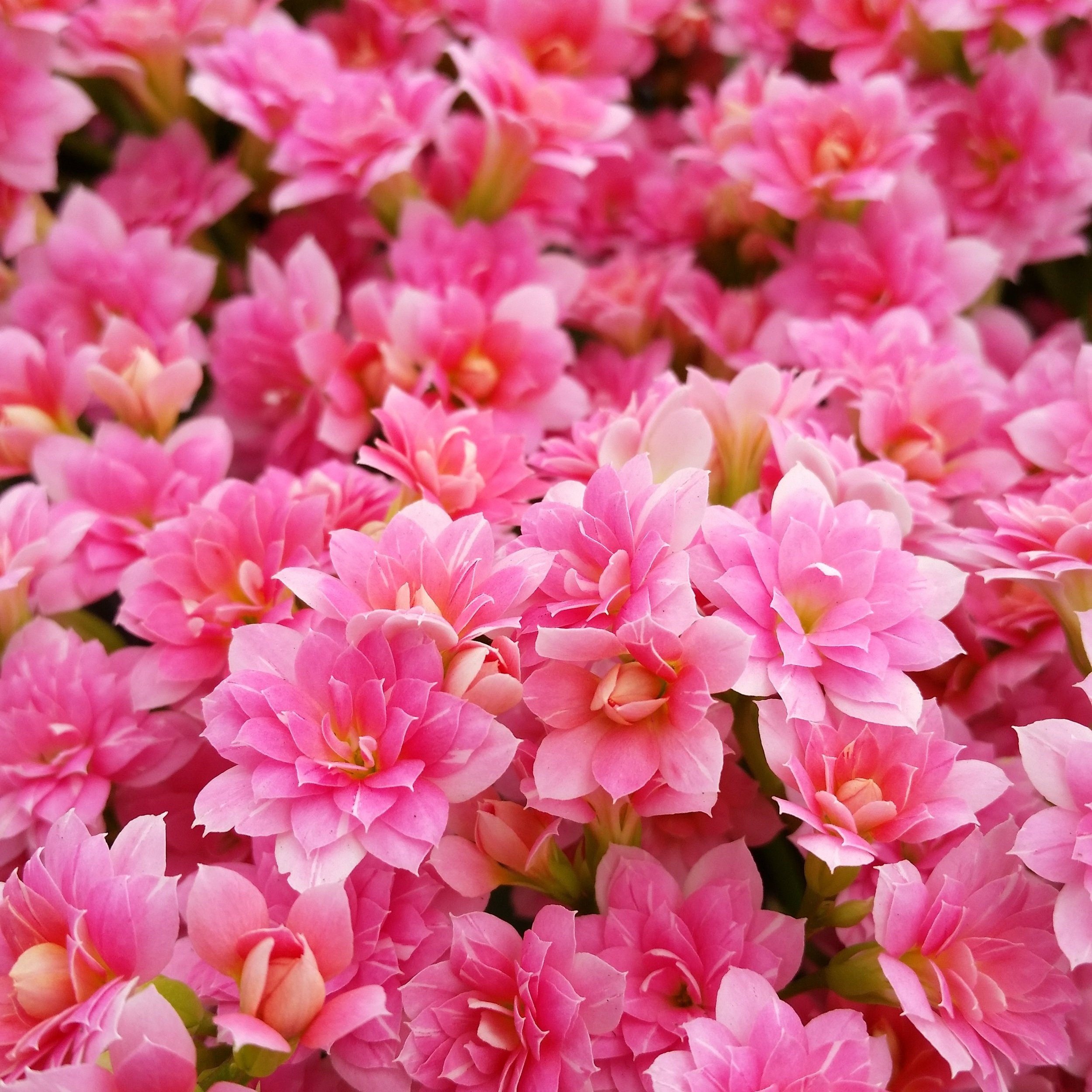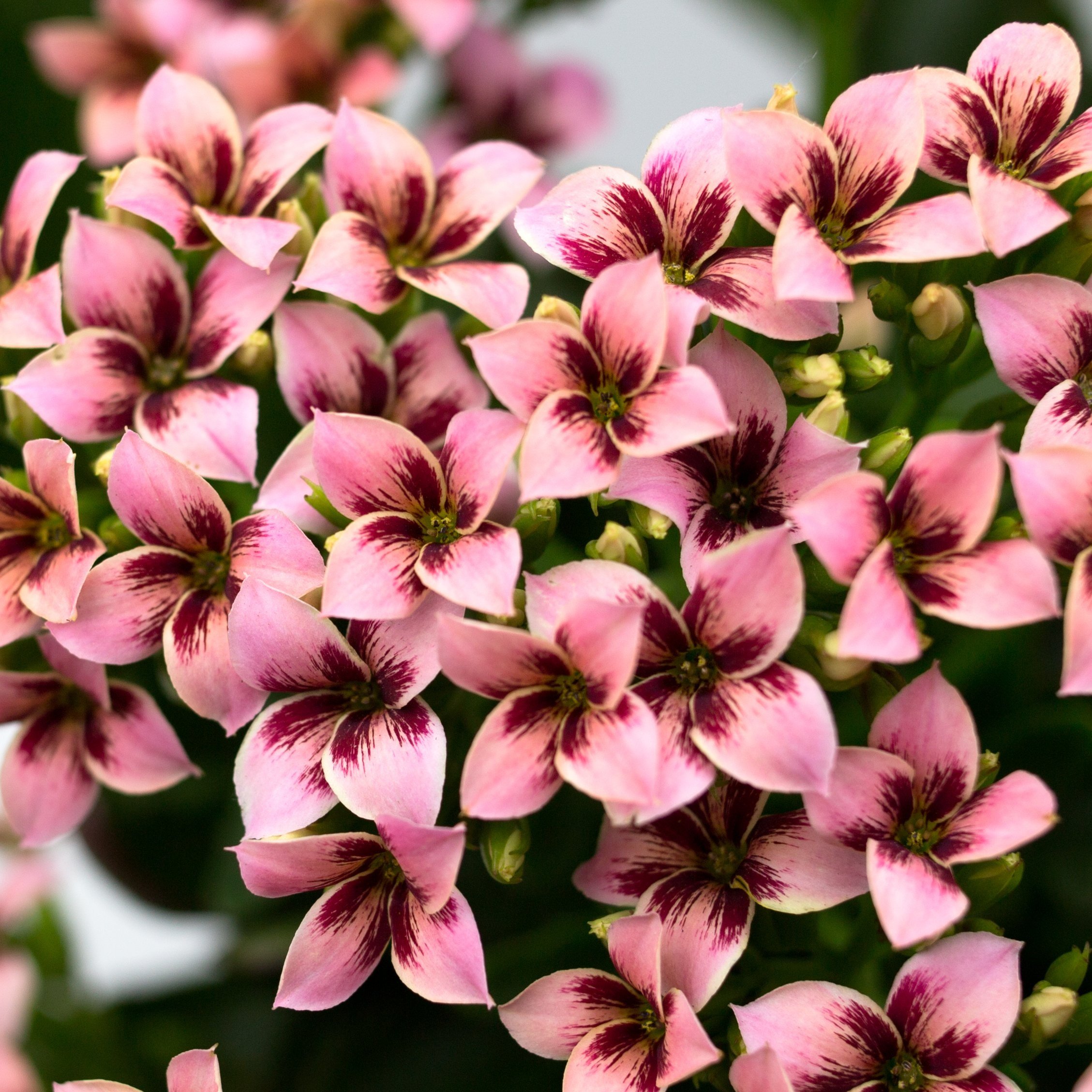Kalanchoe
The Plant of
Ease & Persistence
Kalanchoe is a beautiful succulent with small, clustered blooms that canopy over lush, green leaves. Many are drawn to these flowers for their ease of care and foliage. They bloom consistently throughout the year in response to daylight. They also offer a wide range of colors from pink to white. They are sure to brighten any space you choose!
Kalanchoe
Care Line Classification
Care Information
Light
Place in a bright location. Near a sunny window is ideal, but tolerates a wide range of conditions.
Temperature
Moderate temperatures are ideal: 65-70°F daytimes and 60-65°F nights. Avoid excessively hot or cold areas.
Water
Allow soil to dry between thorough waterings. Remove wrap or decor before watering. Drain off all excess water. Do not allow plants to stand in water.

The Kalanchoe: Deep Dive
Season
Year round indoors
Care
Kalanchoe needs a lot of sunlight to bloom, so it’s good to keep them in a room with an abundance of light. Avoid placing them in direct sunlight, as it can scorch the leaves and keep the plant from blooming. These low maintenance plants don’t require daily watering, but should receive a complete saturation every few weeks or so depending on the temperature. Let the soil completely dry out between waterings and then saturate. Test the soil by sticking your finger in the first couple inches and make sure it’s dry. Because succulent leaves are capable of storing water, this plant is easy to care for. It is best to take off the wrap/container and place in a sink before watering to allow it to drain from the bottom of the pot. Once the pot has drained, replace it to its original spot.
It is not necessary to throw out a kalanchoe when it’s done flowering: it will actually re-bloom. Patience is required for this process. Cut the flowering head and let it rest for a month or so. Follow this rest with 12 hours of complete darkness, and then 20 hours of bright light for at least 6 weeks to allow its buds to develop. You may then give the plant its normal light conditions and care.
Home to Garden
Kalanchoe plants typically are indoor plants but can grow outdoors in hardiness zones 10 through 12. Drought tolerant by nature, the kalanchoe thrives in full to partial sun and sandy, fast-draining soil. Whether grown in a pot or in the ground, this succulent needs transplanting when it becomes pot bound, overgrown or crowded. For best results, transplant kalanchoe in spring, once new growth begins. Dig a hole, spacing it 8 to 12 inches away from other plants, objects and buildings. Make the hole twice as wide as the kalanchoe plant's width and 12 to 15 inches deep. Place the kalanchoe in the center of the new hole. Add or remove soil from the hole's bottom as needed to position the top of the plant's root ball level with the encircling ground. Fill the hole one-half full of soil, tamping it down around the root ball. Fill the hole with water from a garden hose. Wait for the water to soak into the soil completely. Fill the remainder of the hole with soil, tamping it down as before. Do not overfill the hole, mound soil up around the kalanchoe's stems or bury the plant deeper than it was previously growing. Apply 1/2 to 1 inch of water to the planting site to moisten the top 6 to 12 inches of soil. Water the kalanchoe when the soil becomes dry. Do not overwater.
Flower Meaning
Flowering kalanchoe blooms for at least eight weeks. That endurance gives the plant its symbolic meaning of persistence and eternal love.
Fun Facts
Kalanchoe is a member of the succulent family, with 125 known species. The name is derived from the Chinese word ‘Kalan Chau’. The plant is native to China, southern and south-east Africa, and is particularly widespread in Madagascar. It was brought to Europe around 1930, and bred by German seed merchant Robert Blossfeld. This is where the Blossfeldiana species gets its name from. Nowadays, kalanchoe is a very popular houseplant because of its enormous variety and easy maintenance routine.














